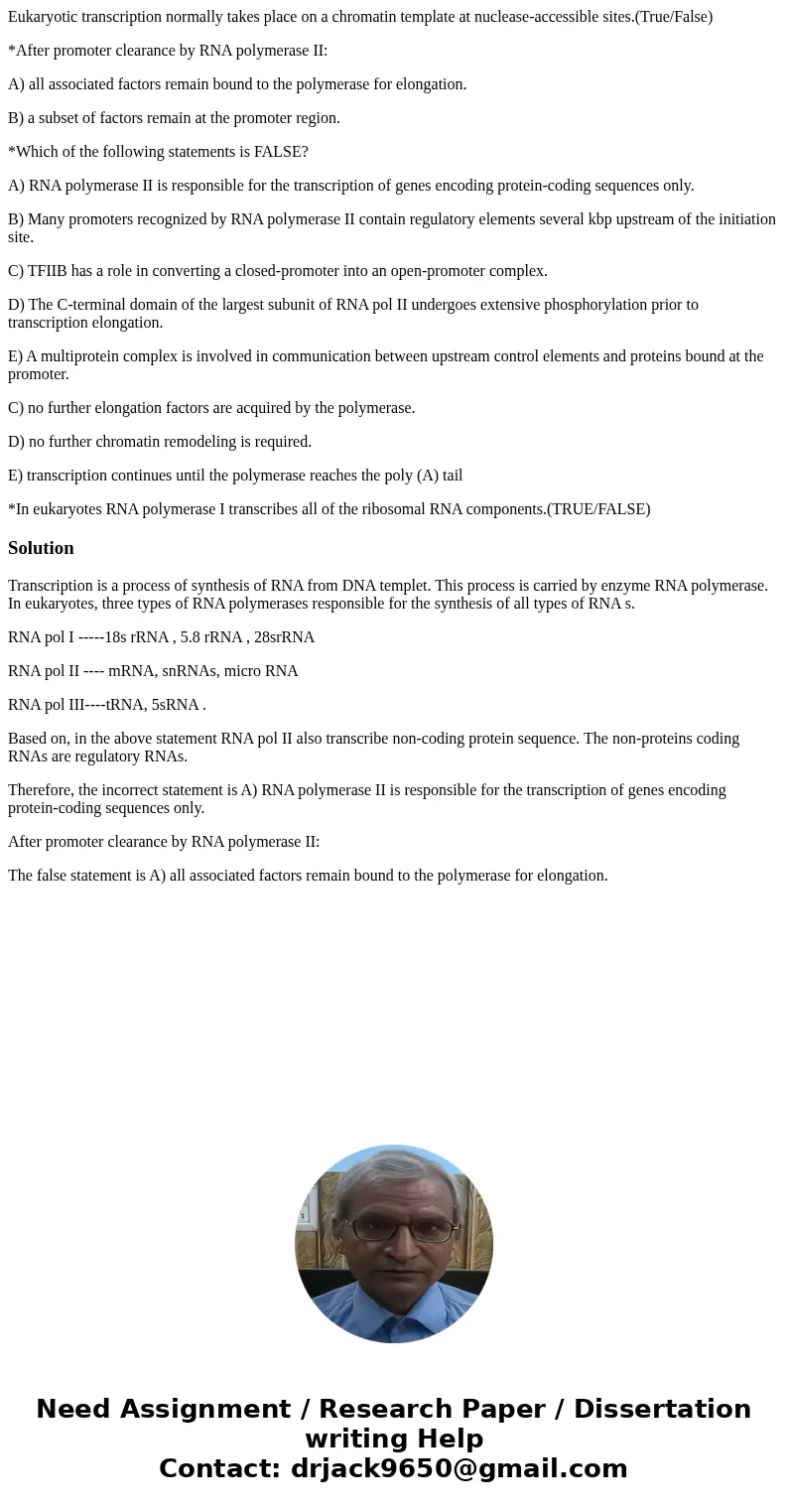Eukaryotic transcription normally takes place on a chromatin
Eukaryotic transcription normally takes place on a chromatin template at nuclease-accessible sites.(True/False)
*After promoter clearance by RNA polymerase II:
A) all associated factors remain bound to the polymerase for elongation.
B) a subset of factors remain at the promoter region.
*Which of the following statements is FALSE?
A) RNA polymerase II is responsible for the transcription of genes encoding protein-coding sequences only.
B) Many promoters recognized by RNA polymerase II contain regulatory elements several kbp upstream of the initiation site.
C) TFIIB has a role in converting a closed-promoter into an open-promoter complex.
D) The C-terminal domain of the largest subunit of RNA pol II undergoes extensive phosphorylation prior to transcription elongation.
E) A multiprotein complex is involved in communication between upstream control elements and proteins bound at the promoter.
C) no further elongation factors are acquired by the polymerase.
D) no further chromatin remodeling is required.
E) transcription continues until the polymerase reaches the poly (A) tail
*In eukaryotes RNA polymerase I transcribes all of the ribosomal RNA components.(TRUE/FALSE)
Solution
Transcription is a process of synthesis of RNA from DNA templet. This process is carried by enzyme RNA polymerase. In eukaryotes, three types of RNA polymerases responsible for the synthesis of all types of RNA s.
RNA pol I -----18s rRNA , 5.8 rRNA , 28srRNA
RNA pol II ---- mRNA, snRNAs, micro RNA
RNA pol III----tRNA, 5sRNA .
Based on, in the above statement RNA pol II also transcribe non-coding protein sequence. The non-proteins coding RNAs are regulatory RNAs.
Therefore, the incorrect statement is A) RNA polymerase II is responsible for the transcription of genes encoding protein-coding sequences only.
After promoter clearance by RNA polymerase II:
The false statement is A) all associated factors remain bound to the polymerase for elongation.

 Homework Sourse
Homework Sourse